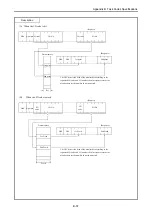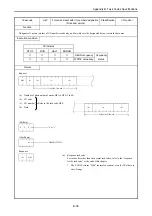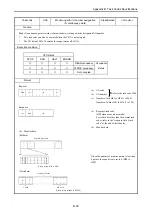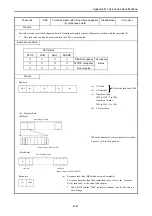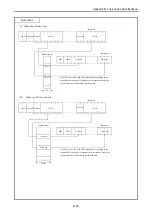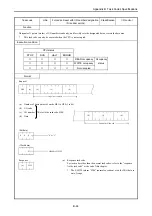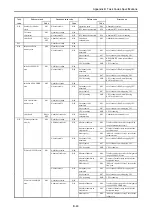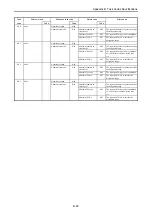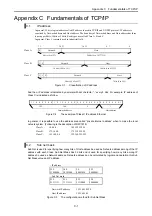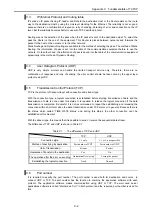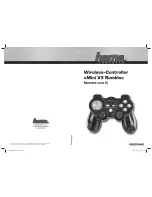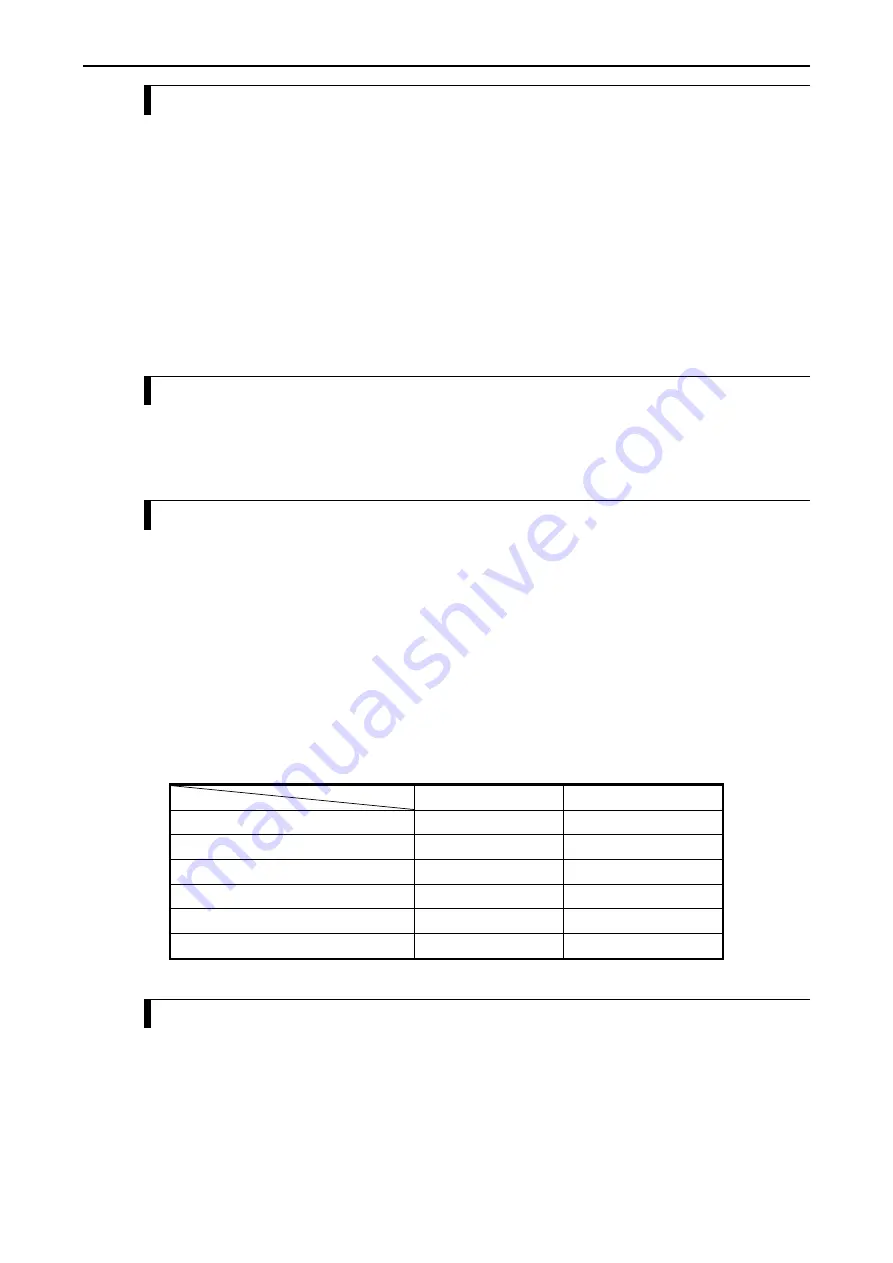
Appendix C Fundamenntals of TCP/IP
C.3
IP(Internet Protocol) and routing table
IP sends an IP packet having IP header and Data to the destination Host or the Router exists on the route
way to the destination Host by using the Link layer standing for the Ethernet. The reliability is not so good,
because there is no confirmation of response, retry of sending, detecting of error and connection on the IP
level. But the reliability becomes better to use with TCP described in later.
Routing means the selection of the pass when the IP packet is sent to the destination Host. To select the
pass the Router is the one of the equipment. This Router is placed between networks and forwards the
packet to the host on the network or to the other network.
Static Routing and Dynamic Routing are available for the method of selecting the pass. The method of Static
Routing, the information of pass is set into the table of the communication equipment before to use the
network. On the other hand, the information of pass is saved into the table of the communication equipment
dynamically is the method of Dynamic Routing.
C.4
User Datagram Protocol (UDP)
UDP is very simple protocol and handle the limited transport service only. Therefore, there are no
confirmation of response and retry of sending, the error control should be taken care by the upper layer
protocol using UDP.
C.5
Transmission Control Protocol (TCP)
TCP is the protocol of transport layer with connection and stream type.
With the connection type, a logical connection is established before starting transmission of data and the
transmission of data is done under this status. It is required to release the logical connection if the data
transmission is completed. Be careful it is not recommended to repeat the establishing and releasing the
connection within short term when the data transmission under TCP protocol in general. Because there is
the status which called “TIME_WATE status” and during this status, the other connection can’t be
established at this moment.
With the stream type, this means that it is possible to send or receive the sequential data stream.
The difference of TCP and UDP is shown in Table C.1.
Table C.1
The difference of TCP and UDP
TCP
UDP
Connection style
1:1 only
1:1 or 1:n are possible
Method of specifying by application
Port number of TCP
Port number of UDP
Unit of transmission
Stream Packet
Guarantee of transfer to the destination
Yes No
The operation after the error on sending
Automatically retrying
Losing the packet
Establishing the logical connection
Need No
need
C.6 Port
number
It is required to specify the port number. The port number is used both for destination and source to
connect UDP or TCP. The port number has the function to combine the application software with each
protocol. The application software makes communication using UDP or TCP. The well used server
applications software is called “Well-known Port” in both protocol and the reserved port number is used for
this.
C-2

